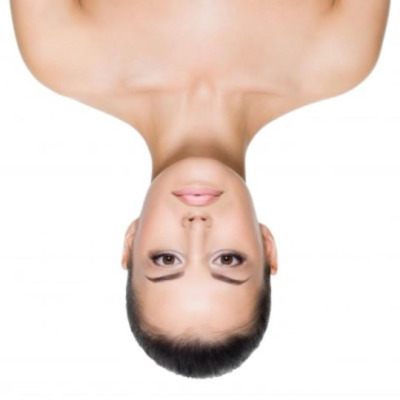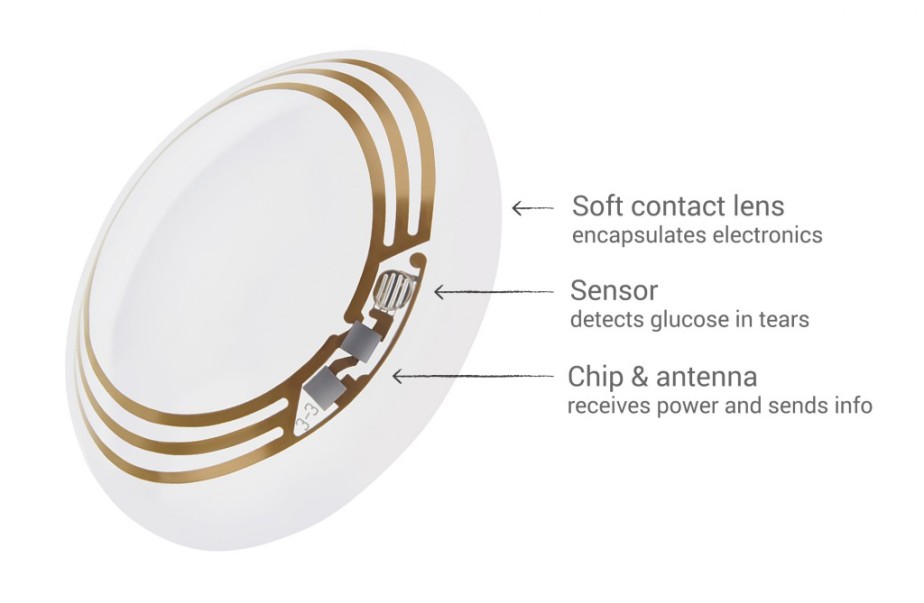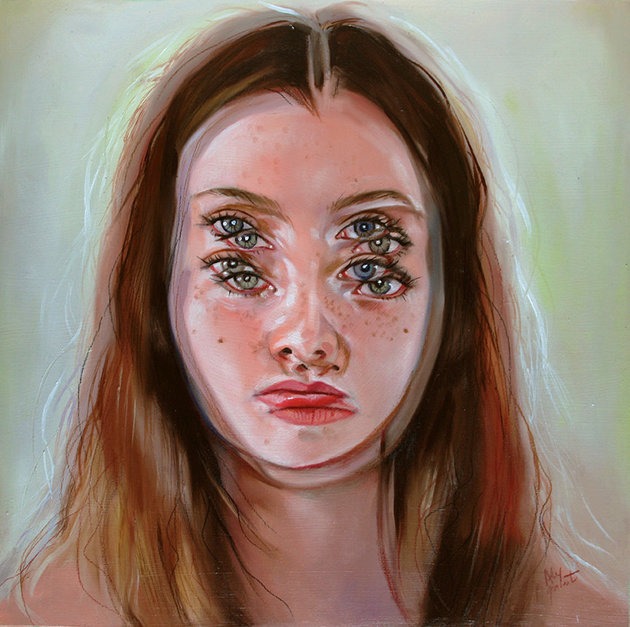
Esta ilusión óptica me sorprendió bastante. Chéquenla y ahorita les explico porqué.
¿O ya lo notaron? Si no lo han hecho, observen bien la imagen. A simple vista la chica se ve normal, incluso bonita. Toda una modelo.
Ahora vean la imagen de cabeza. Volteen ustedes la cabeza o si saben como editar fotos, descárguenla y háganlo con algún programita. Al ver la cara volteada y en la orientación correcta te das cuenta que la cara ha sido alterada, partes de ella (ojos y boca) han sido invertidos lo que la hace ver no solo poco bonita, sino desconcertantemente fea.
Me sorprendió mucho cuando me di cuenta que esta imagen no nada más engaña a tu percepción, si no a tu noción completa de lo que entiendes como belleza. Toca un terreno como nunca lo había visto a otra imagen hacerlo, con un salto abrupto de lo bello a lo horrible, poniendo en evidencia que esa cualidad mental tan sublime y “universal” para los humanos -la belleza-no es más que un juego de percepciones, un “trompe-l’œil”. No hay nada universal aquí, ni platónico. Puro reconocimiento de patrones, de simetría y de familiaridad.
La reflexión me pareció interesante…


